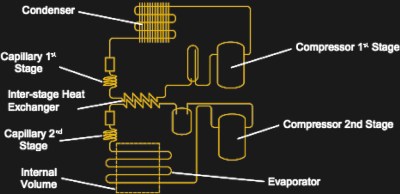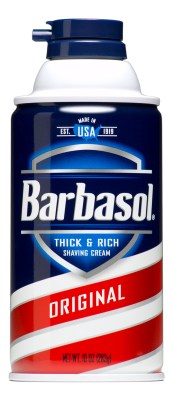One of the big stories last week was the announcement of results from clinical trials that suggest a new COVID-19 vaccine from the German companies Pfizer and BioNTech is strongly effective in providing immunity from the virus. In the midst of what is for many countries the second spike of the global pandemic this news has been received with elation as well as becoming the subject of much political manoeuvring.
While we currently have two vaccine candidates with very positive testing results, one of the most interesting things for us is the need to keep doses of the Pfizer/BioNTech vaccine extremely cold until they are administered. Let’s dig into details of the refrigeration problem at hand.
Special Fridges for -80 °C (-112 °F)

This particular vaccine must be refrigerated at -80 Celsius until it is ready for use. This presents a significant problem for any mass vaccination programme, because while -80 degree freezers are a done deal in terms of manufacture they are not commonly to be found in community healthcare. Labs and major hospitals may have them, but we’re told that even in a developed country the general practitioners who will be tasked with administering the vaccine have until now had little need for one. If this presents a problem in a place with significant resources then it is magnified significantly in less wealthy regions of the world, because to effectively fight a global pandemic it is imperative that the whole planet be vaccinated to avoid a remaining reservoir of infection.
I’m not biologist, but every school biology class teaches the for-the-children basics of vaccination. In the late 18th century Dr. Edward Jenner successfully inoculated a boy with the cowpox virus to bestow immunity to smallpox, and from that developed the science of immunology. It’s likely we will all have received similar vaccines which our high-school biology simplifies for us as weakened or less-potent relations of the target, and the fact that past killers are now receding into folk memory is testament to their success.
These are the jabs my doctors and their team in Oxfordshire administer by the thousand, and they can protect generations of British kids with them using only a relatively conventional refrigerator. What’s so special then about the Pfizer/BioNTech vaccine? The answer lies in its method of operation, instead of exposing us to a pathogen it’s a so-called RNA vaccine. It contains a fragment of the virus’ genetic material, which once administered enters our cells and triggers their immune responses to the coronavirus. The problem we are told lies in the fragility of the RNA, and to prevent it degrading an extra-cold fridge is needed.
The Logistics Of Last-Mile Cryogenic Transport

As engineers our obvious next question then is what makes a -80 °C freezer so special? We’re on firmer ground when it comes to the operation of a fridge: it’s a heat pump with a radiator, expansion valve, and condenser, through which a propellant is pumped by a compressor. The condensing propellant causes the cooling of the inside of the refrigerator, and the resulting captured energy is radiated as heat to the room by the radiator. There’s a limit to the level of temperature differential that can be created by such a heat pump, so the -80 degree freezers have two of them in series. They’re less efficient and more expensive to produce than your domestic fridge, but their manufacture is well established. We’re told it’s simply that there aren’t enough of them where they would be needed, and thus it’s interesting to think for a minute about the implications of that.

One might think that equipping all doctors with suitable -80 degree freezers would be the obvious course, after all while they aren’t cheap in domestic terms (a quick Google search suggests $10,000 and upwards), to governments throwing billions at the pandemic their cost would be easily manageable. But the problem there lies in the supply chain, the global market for them in non-pandemic times is not enough for there to be manufacturing capacity to meet unexpected huge demand. It’s unlikely that domestic refrigerator plants could be tooled up to make them in bulk within a reasonable timescale, so the prospect of a brand new -80 degree freezer landing in my doctor’s surgery seems slim. One might expect that such devices could be requisitioned for the effort from their existing owners, from universities and research labs, but therein lies another problem. These vaccines are for injection into patients, and therefore they must be protected from contamination at all costs. The idea of a fridge fresh from a university chemistry lab where Ph.D students have been using it to store highly toxic organometalic compounds is simply not tenable if serious risk to patients is to be avoided.
Another option might be to eschew refrigeration, and instead opt for different cooling methods such as passive cooling with liquid nitrogen. The manufacturing capacity exists to make this substance in industrial quantities, and it is already something that sees extensive use in medical environments. The snag is that it is used at the consumer end of medicine for cryongenic treatments such as wart removal rather than for cryogenically cooled transport or storage, so there would be a need for an entirely new infrastructure to put in place. Cryogenic sample transport boxes are a done deal, but aside from any supply issues with a sudden demand for tens of thousands of them they can only guarantee the low temperature while their payload of liquid nitrogen has not evaporated. They alone are not a replacement for an infrastructure of -80 degree freezers, though they might provide a substitute for active refrigeration in lengthening the last stage of delivery.
A bright spot in this story is that a second vaccine developed by Moderna doesn’t require the extreme refrigeration, and can be stored at 2-8°C (35-46 °F) for up to a month. This would make reaching parts of the world without infrastructure for extreme cooling possible. But in the near-term we will certainly need both of these vaccines and as many doses of them as can be produced and delivered as possible, since two doses are needed for each person in world population that numbers almost 8 billion.
As we will no doubt see from the various solutions our governments will pursue over the coming months, there is no magic bullet for the unexpected mass deployment of a cryogenic vaccine. For the UK I’d expect to see distribution centres at major hospitals which have the required freezers, with the day’s doses being delivered each morning to vaccination sites. We are however a relatively small and densely packed country for whom the challenges are different to one spread over a huge area, and a world away from those in some developing countries. With this operation assuming a global significance it’s unexpected to think that the key to the end of the pandemic does not only lie in the hands of the scientists creating the vaccines, but also with the refrigeration engineers responsible for its safe arrival at the point of use.
"difficult" - Google News
November 17, 2020 at 10:01PM
https://ift.tt/32VBt6G
The Special Fridges Behind The COVID-19 Vaccine, Why It's Surprisingly Difficult To Be That Cool - Hackaday
"difficult" - Google News
https://ift.tt/2VWzYBO
https://ift.tt/3d5eskc
Bagikan Berita Ini














0 Response to "The Special Fridges Behind The COVID-19 Vaccine, Why It's Surprisingly Difficult To Be That Cool - Hackaday"
Post a Comment